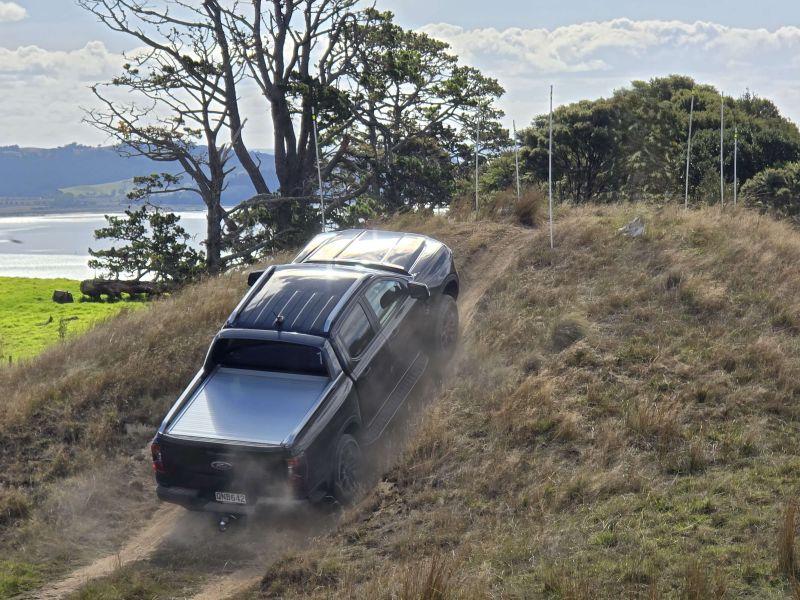NavMan Wireless’s Chris L’Ecluse, senior solution specialist, and an expert in the field of health and safety, looks into the looming new regulations.
Driver safety is an ever-present topic in New Zealand with our challenging landscape and narrow, twisting roads, not to mention the legacy of the “she’ll-be-right” attitude.
The Ministry of Transport calculates annual social cost figures for road injuries and fatalities at approximately $3.14-billion, according to latest figures released at the end of 2014. Figures include loss of life and life quality, loss of output due to temporary incapacitation, medical costs, legal costs, and vehicle damage costs. But whichever way you look at it, it’s a big number.
The government is focussed on improving driver safety, and in 2010 launched its Safer Journeys strategy, which is a 10-year strategy to guide improvements in road safety. The strategy’s vision is a safe road system increasingly free of death and serious injury. To achieve this it takes a Safe System approach, looking across the entire road system to improve safety by creating safer roads and roadsides, safer speeds, safer vehicles and safer road use.
Businesses can’t cover all aspects of driver and road safety, but there are many things, such as driver behaviour and speeding, that they can work on. And with the Health and Safety at Work Act coming into force on April 4, there is even more of an imperative for businesses to take action to improve safety for their drivers.
Let’s recap on the health and safety law changes.
Under the new laws, individual people (not just companies) will be held responsible in the event of a workplace incident. Directors or officers have a primary duty of care to ensure the health and safety of workers and others. They must exercise due diligence to ensure that the organisation complies with that duty. That includes making sure there are appropriate processes for receiving and considering information about incidents, hazards, and risks, and responding to them in a timely way.
If directors or officers do not take reasonable steps to ensure that they are kept informed of risks and hazards, they will be in breach of the law and personally liable. If there is a safety issue and they do nothing, they will be liable. And even if they delegate to others they still remain responsible.
Workers will also be required to take on more responsibility, including a duty to take reasonable care for their own health and safety and ensure that their actions do not affect the health and safety of others.
Remind me – what’s a PCBU?
The new law introduces the term PCBU, which means Person Conducting a Business or Undertaking. Essentially it’s the person who is in the best position to control risks for work health and safety while carrying out the business or undertaking.
What about “reasonably practicable”?
The term “reasonably practicable” appears many times in the new legislation, and it’s an important concept. The PCBU must do what is reasonably practicable to meet their duties to ensure workplace health and safety.
For a firm with a fleet of company vehicles, speeding drivers are a very real risk. It would not be reasonably practicable to have the boss sit next to every driver to make sure they stick to the speed limit! But it would be reasonably practicable for you to have regular meetings with drivers to discuss safe driving and driving within the speed limit (and to minute these meetings to prove that they had taken place).
What else can you do?
Identifying and monitoring unsafe driver behaviour is a key function of GPS fleet management systems. GPS systems provide crucial information to managers on things such as speeding, excessive idling, harsh braking, high engine rpms, and other poor driving habits. You can use the system to analyse driver behaviour across your fleet, then set benchmarks for improvement. You can identify areas for improvement for individual drivers and show them the impact of their behaviour on safety.
Providing driver training is an integral part of improving driver safety, and it also helps to create and maintain a strong health and safety culture.
There are a variety of driver training options on the market but web-based systems, such as the Navman Wireless Driving Academy, allow fleet managers to pinpoint their most at-risk drivers and provide a specific training regime to suit each driver’s behaviour.
Drivers can be assessed across competencies such as scanning, space management, knowledge of danger zones, speed management, awareness of other motorists, and attitude. Once evaluation is complete drivers can be assigned targeted training modules to address specific deficiencies. By improving driver’s hazard perception, such training allows fleet managers to reduce speeding, collisions, injuries and costs, and work with staff to ensure they are driving more safely.
Workplace safety is everybody’s business
The new Health and Safety at Work Act is expected to create significant change in the health and safety landscape in New Zealand. Technology has a part to play in helping both employers and workers in making the transition to this new law.
www.navmanwireless.co.nz






